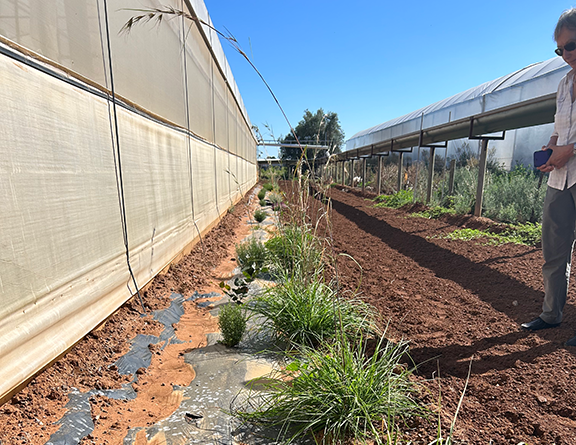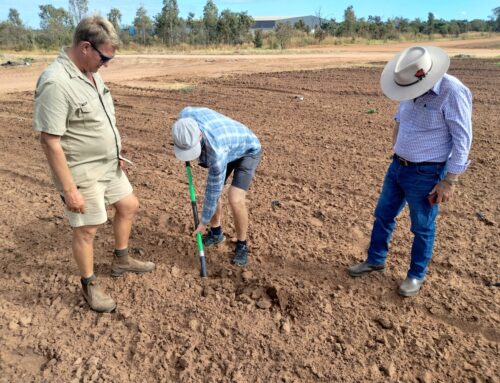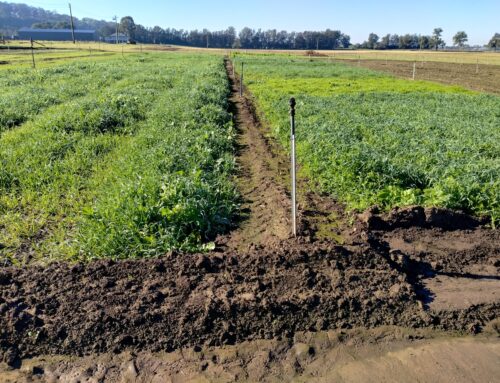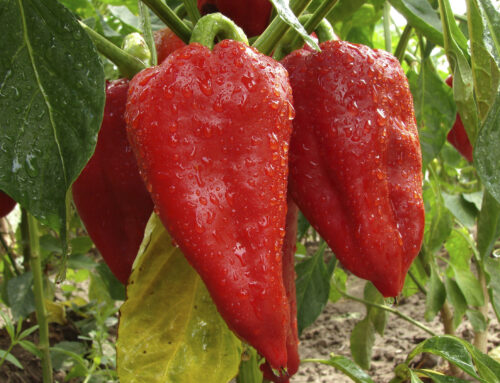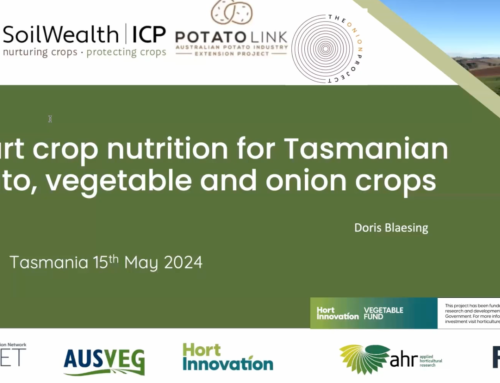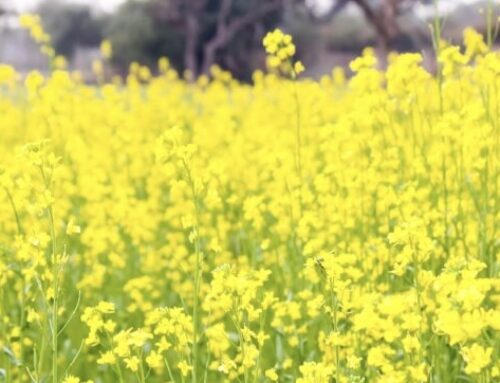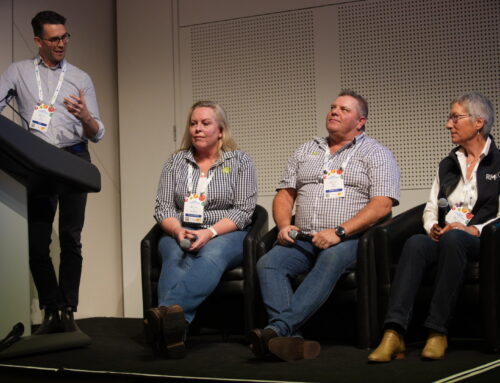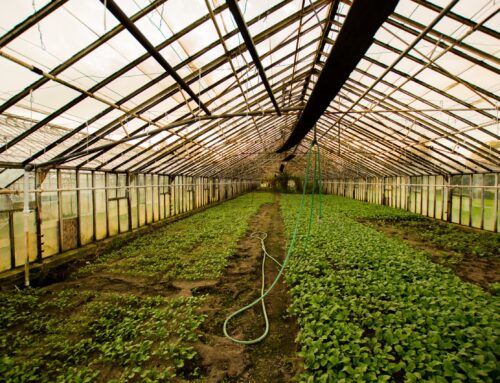A greenhouse capsicum producer in South Australia’s Northern Adelaide Plains is hosting a Soil Wealth ICP demonstration trial across two production sites. To support their integrated pest management (IPM) program, native insectaries were planted along the outside of a greenhouse production unit (group) at each site in September 2023.
The objective of the trial plantings was to investigate whether these plantings could (1) attract native predators of pest insects and (2) ‘house’ additional predators after they were released. The plantings consisted of a mix of mainly native, perennial shrubs and grasses. Plants were selected with the aim to provide food, such as pollen and nectar, for the different types of predators throughout the production season. The expectation is that the effectiveness of the insectarium increases over time as plants grow.
This is the first report from an exciting, ongoing demonstrations site.
Site 1 – Attracting native predatory insects
The insectary at this site aims to attract native predatory insects which can provide a barrier against the main pest, whitefly, as well as thrips.
While regular monitoring showed relatively low insect activity across the site, key beneficial insects were found including Nesidiocoris (predator of whitefly, moths, thrips, two spotted mites and aphids) and an adult brown lacewing (predator of soft-bodied pests including aphids and caterpillars). Brown lacewing eggs were also found on the plant species Rytidosperma racemosum.
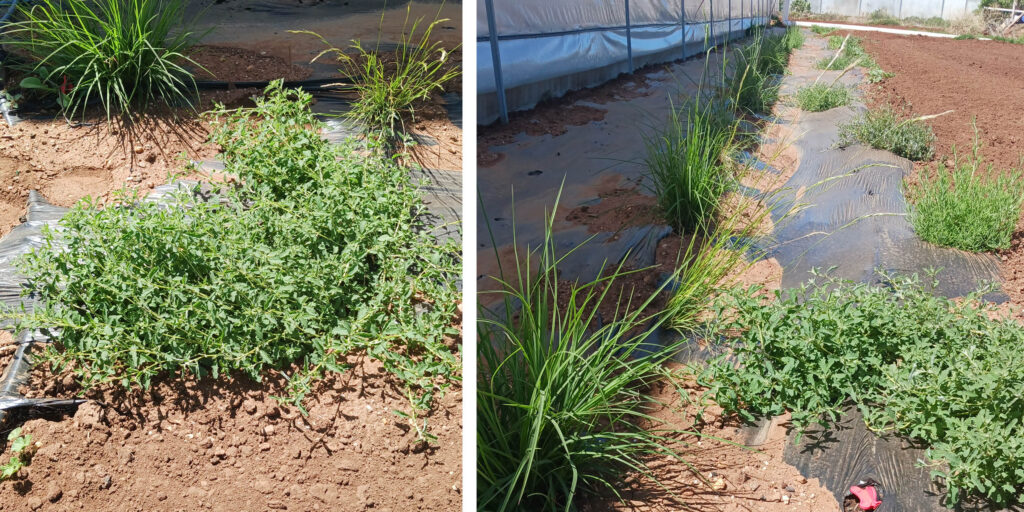
L-R: Atriplex semibaccata and progression after laying the weed mat at site 1.
Site 2 – Beneficial insect release site
The mixture of native and non-native plants was selected to support the establishment of introduced beneficial insects that can control whitefly and thrip levels in the adjacent greenhouse.
The main concern for this site was that the high flowering level needed to provide nectar and pollen for the introduced beneficial insects could attract pests such as thrips. There were also nearby weeds potentially harbouring pests. Despite these anticipated challenges, there were no significant quantities of pests found in the insectarium.
Before the beneficial insects were released, naturally occurring Aphidius (parasite of aphids) were recorded, which had also been released into the greenhouses as part of a regular IPM program. The Alyssum provided nectar which is an important carbohydrate resource for naturally occurring Hymenoptera (parasitic wasps) which have high energy requirements.
Beneficial insects released on this site included 1000 Orius tantillus (predator of thrips) and 10,000 Typhlodromips montdorensis (Monties, predator of juvenile thrips, whitefly and two spotted mite). The releases were concentrated on the flowering plants at the time (Alyssum, Chrysocephalum and Myoporum) to ensure that pollen and nectar were immediately available.
Nesidiocoris was also found feeding on whitefly on two of the Alyssum plants. The low level of whitefly was enough to attract these predators without causing damage or creating issues inside the greenhouse.
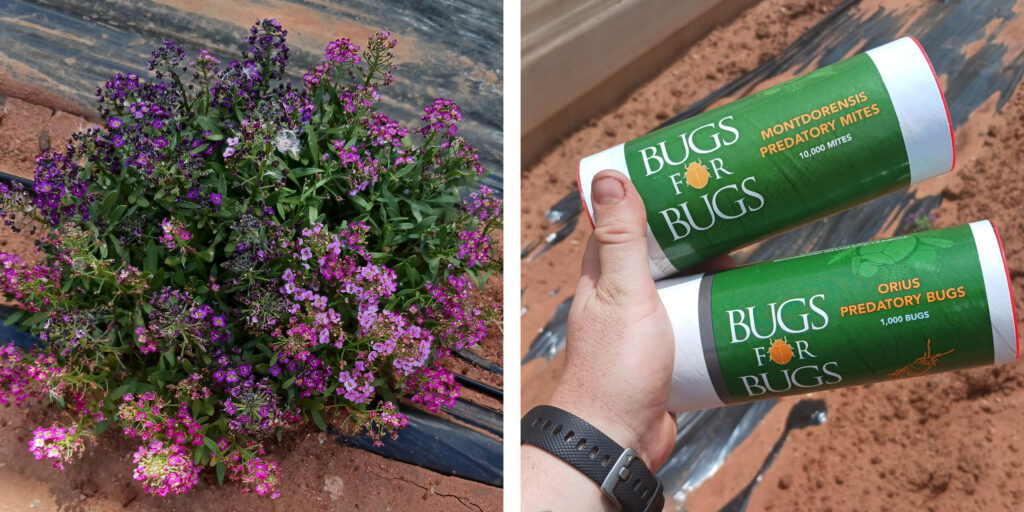
L-R: Alyssum and the beneficial insects released at site 2.
The bottom line
Overall, both sites showed promise and the potential for continued success in attracting and supporting beneficial insects without creating issues with pests, setting an important example for other greenhouse producers.
Alyssum was a particularly useful plant in this trial as its quick flowering nature provided some resources for beneficial insects while the native plants were still establishing. Alyssum could also be used as a banker plant inside greenhouses without reducing the capacity for crop production.
Key considerations for native insectaries
- Seasonal flowering: Select plants with different seasonal flowering periods so that nectar and pollen is consistently available.
- Support biodiversity: A range of different flower shapes and structures can cover the preferences of a variety of beneficial insects.
- Peak beneficial insect activity: Peak flowering times should coincide with peak insect activity (pests and beneficials) to ensure the plants are providing an ideal environment for native and introduced beneficials when pest pressure is highest.
- Breeding requirements: As well as choosing plants that provide nectar and pollen to support insect reproduction, consider egg laying sites for beneficials (e.g. Acacia and Hardenbergia pods for Orius. Brown lacewings lay eggs in the crowns of Rytidosperma).
- Avoid problematic plants: Avoid species which are known to attract or harbour pests and diseases.
- Timing of planting: Autumn is ideal to allow plants to establish in the cooler weather with natural rainfall and potentially avoid the need for supplementary watering. Autumn and winter are also low insect activity times, so the plants would be established and potentially ready to flower before insect activity starts to increase.
IPM lessons
- Collective approach: Generally, IPM works most effectively when several producers in an area are using a similar approach as the pest population can be more consistently controlled over a larger area.
- Start small: It can be more effective to release a smaller number of beneficial insects to give them a higher chance of survival, rather than releasing a higher quantity which compete for resources.
- Keep at it: Successful IPM is based on continuous learning and the rewards are there in reduced use of insecticides and input costs.
Acknowledgements
Soil Wealth ICP team members Dr Doris Blaesing and Camilla Humphries (RMCG) would like to thank the host grower, integrated pest management (IPM) specialist contractor Jessica Bamford, Bugs 4 Bugs IPM specialist Steven Coventry and VegNET South Australia Regional Development Officer Peta Coughlin for their support of this trial.
More information
Find out more about grower experiences with IPM in this case study.

